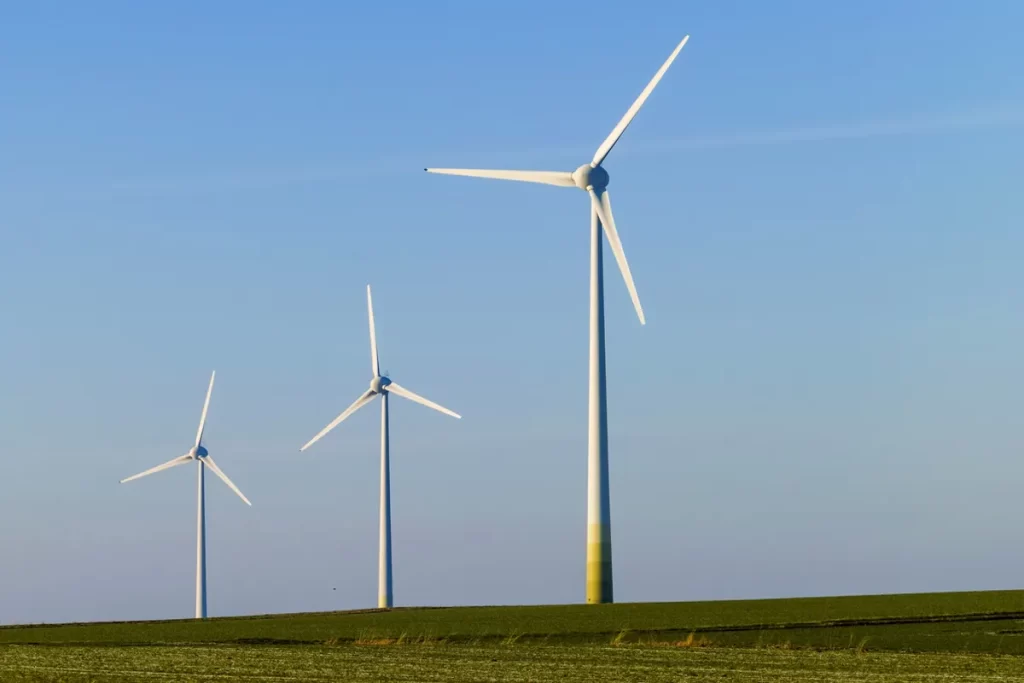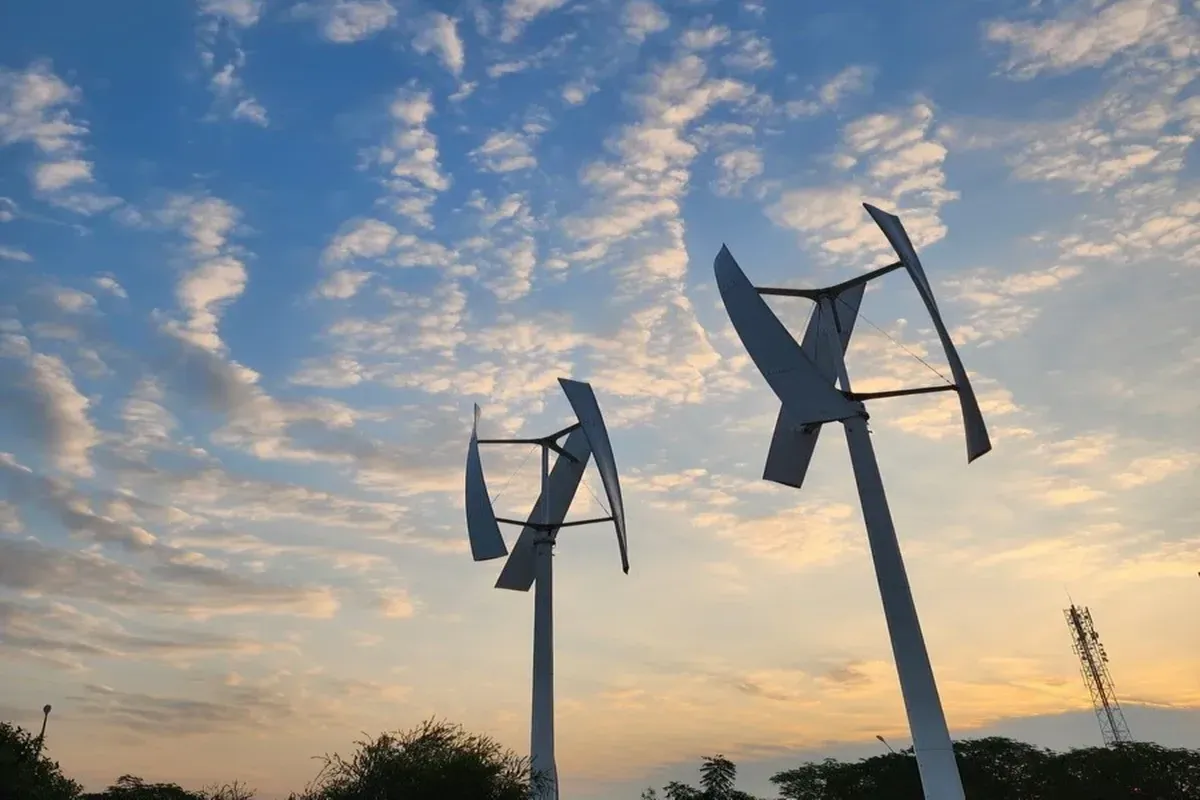Welcome, fellow myth-busters! Have you ever heard some wild tales about wind turbines and wondered if they were true? Well, you’ve come to the right place! In this blog post, we will dive into the swirling vortex of wind energy myths and debunk some common misconceptions. By the end, you’ll be armed with the facts and ready to blow away any inaccuracies that come your way. So, grab your detective cap and magnifying glass, and let’s set sail on this whirlwind adventure of debunking wind turbine myths!
Myth #1: Wind Turbines are Super Noisy Neighbors
Hold onto your earplugs, folks! You might’ve heard that wind turbines are loud, obnoxious neighbors, but that’s simply not true. Modern wind turbines are designed to be as quiet as possible, and most of the noise they produce is from the gentle whoosh of the blades passing through the air. In fact, the sound they make is often compared to rustling leaves or a quiet conversation.
Let’s put things in perspective: the average noise level of a wind turbine is around 40-50 decibels (dB) at a distance of about 500 meters. That’s quieter than your dishwasher (around 60 dB) and far softer than a lawnmower (about 90 dB)! So, unless you’re planning to move in next door to a wind turbine, you’ll probably never even notice it’s there.
Wind turbine manufacturers are always looking for ways to reduce noise, and they’ve made great strides in recent years. From refining blade design to optimizing turbine placement, the latest technology is helping to make wind turbines even quieter neighbors. So, the next time someone tells you that wind turbines are too loud, remind them that they’re more likely to be disturbed by their dishwasher or the traffic outside!
Myth #2: Wind Turbines Kill Loads of Birds and Bats
Here’s a myth that just keeps flapping around: wind turbines are bird and bat-killing machines! While it’s true that some birds and bats do collide with wind turbines, the overall impact is much smaller than you might think. In fact, studies have shown that wind turbines are responsible for only a tiny fraction of bird and bat deaths caused by human activities.
Let’s compare wind turbines to other common hazards faced by our winged friends. Buildings, communication towers, and even house cats are responsible for far more bird deaths than wind turbines. Similarly, habitat loss and climate change are much more significant threats to both bird and bat populations. So, while it’s essential to minimize the impact of wind turbines on wildlife, it’s crucial to keep the bigger picture in mind.
The wind energy industry takes the well-being of birds and bats seriously and is working hard to minimize any potential harm. From smart site selection to implementing innovative technologies like ultrasonic deterrents, there’s a strong commitment to making wind energy as wildlife-friendly as possible. So, next time you hear someone squawking about wind turbines and wildlife, gently remind them of the facts and the ongoing efforts to protect our feathery and furry pals!
Myth #3: Wind Energy Isn’t Efficient or Reliable
Some naysayers might try to tell you that wind energy isn’t efficient or reliable, but don’t let their bluster blow you away! Wind turbines have come a long way in terms of efficiency, and modern designs can convert around 50% of the wind’s kinetic energy into electricity. That’s pretty impressive, considering the theoretical maximum efficiency, known as Betz’s limit, is 59.3%!
When it comes to reliability, it’s true that the wind doesn’t always blow, but that’s not a deal-breaker for wind energy. By combining wind power with other renewable energy sources like solar and hydro, we can create a well-balanced, clean energy mix that ensures a consistent supply of electricity. Plus, advances in energy storage and grid management are making it easier to store and distribute wind energy when it’s needed most.

As wind energy technology continues to improve, we can expect even greater efficiency and reliability in the future. Larger, more advanced turbines can capture energy from lighter winds, and sophisticated forecasting tools help grid operators plan for fluctuations in wind power generation. So, don’t let anyone tell you wind energy isn’t reliable – with the right mix of resources and technology, it’s a powerful ally in our quest for a greener future!
Myth #4: Wind Turbines are Ugly and Ruin the Landscape
Here’s a myth that really gets the wind up some people’s sails: wind turbines are ugly and spoil the beauty of our landscapes. But hey, beauty is in the eye of the beholder, right? While some people may not find wind turbines visually appealing, others see them as sleek, elegant symbols of a cleaner, greener future.
solutions to help them blend into the environment. Some ideas include painting turbines to match their surroundings, designing blade-less turbines, and placing turbines in areas where they’re less visually prominent. With a bit of creativity, wind turbines can become a natural part of the landscape.
It’s also worth considering the visual impact of wind turbines compared to other energy sources. Would you prefer a coal-fired power plant or a nuclear facility in your backyard? Wind turbines are a relatively low-impact option, and their slim profiles often have a smaller footprint than traditional power plants. So, next time someone complains about the “ugliness” of wind turbines, remind them of the alternatives and the value of clean, renewable energy!
Myth #5: Wind Energy is Too Expensive
Some folks might try to spin a tale that wind energy is just too pricey, but that’s simply not the case. The cost of wind energy has been steadily dropping over the years, thanks to technological advances and economies of scale. In fact, wind energy is now one of the most affordable sources of electricity, often rivaling or even undercutting fossil fuels!
When considering the costs of wind energy, it’s important to look beyond the price tag. Unlike fossil fuels, wind power doesn’t produce greenhouse gas emissions, air pollution, or other harmful byproducts. By investing in wind energy, we’re not only saving money in the long run, but we’re also investing in a cleaner, healthier future for ourselves and our planet.
When comparing the costs of wind energy to fossil fuels, it’s crucial to take into account the external costs that come with burning coal, oil, and gas. These include the impacts of air and water pollution, climate change, and the many health problems associated with fossil fuel emissions. Once these hidden costs are factored in, wind energy becomes an even more attractive option.
In conclusion, the myth that wind energy is too expensive simply doesn’t hold up. As the costs continue to fall and the benefits become increasingly apparent, wind power is proving to be a smart, sustainable, and affordable choice for our energy needs.

